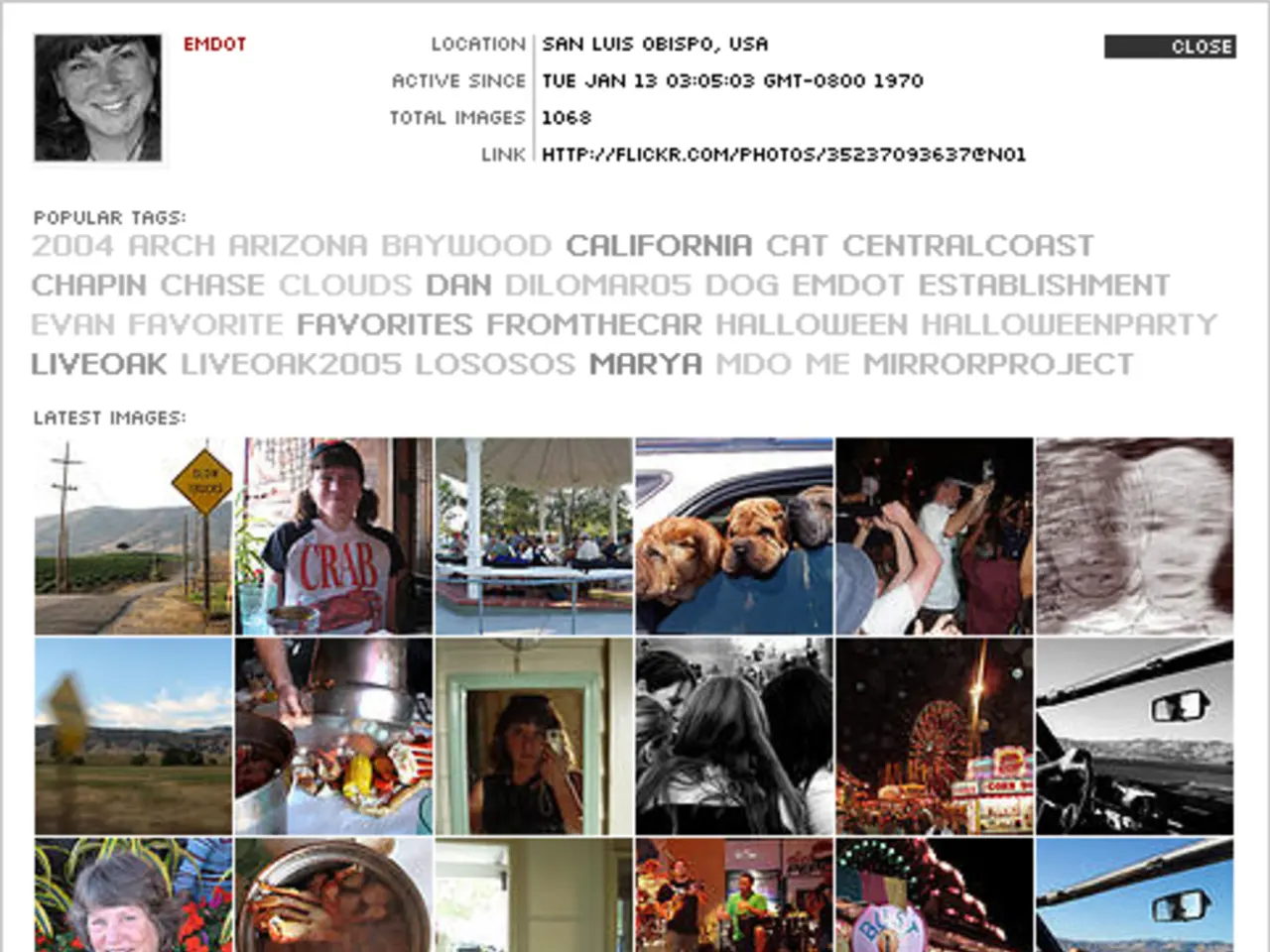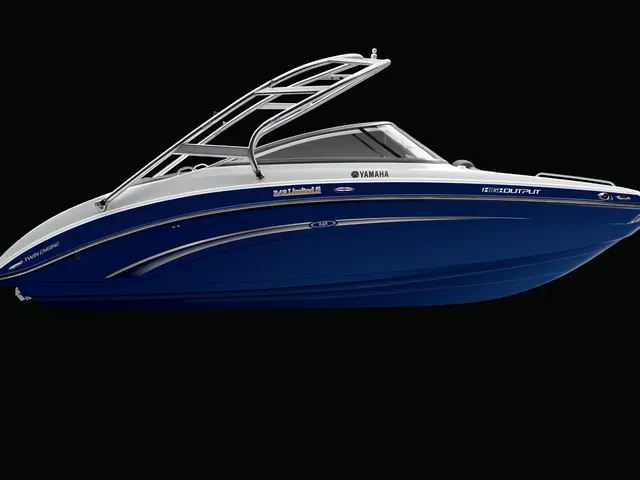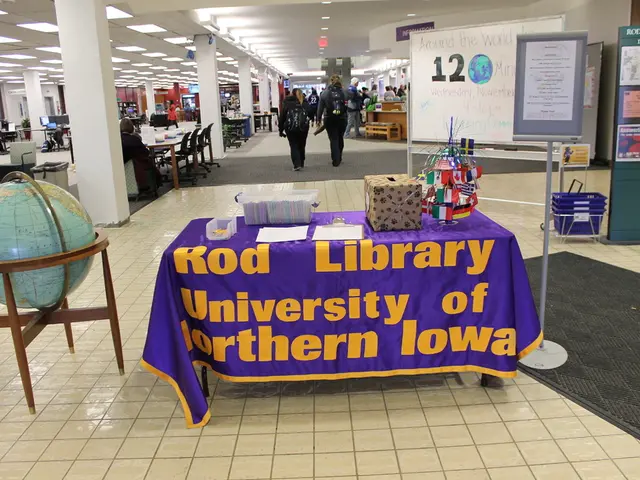Mastering the Art of Selecting Suitable Fonts for Your Brand
In the world of branding, the choice of font can significantly impact a company's visual identity. Here are some key principles and recommendations to help you select the perfect font pairings that reflect your brand's personality.
Firstly, it's essential to remember that decorative, script, and handwritten fonts should be used as accent fonts only, not for body text or subtitles. When choosing fonts for your brand, make sure to select ones that align with your brand identity.
A popular choice for creating a clean and crisp design is a combination of Serif and Sans Serif fonts. Serif fonts, with their traditional appearance, symbolise class and heritage, conveying trust and respectability. Sans Serif fonts, on the other hand, have smooth edges, giving them a clean, sleek, and modern look. They convey simplicity and a straightforward attitude.
The best font pairing ideas depend on the brand personality you want to convey. For instance, a professional and trustworthy brand might opt for a Serif heading with a Sans-serif body (e.g., Times New Roman + Arial, Baskerville + Verdana). These combinations are classic, readable, and formal, conveying reliability and seriousness.
An elegant and luxurious brand might prefer a Classic serif with a clean sans-serif (e.g., Garamond + Helvetica, Playfair Display + Open Sans). This mix of refined, graceful serifs with modern sans-serifs evokes sophistication and timelessness without sacrificing clarity.
For modern and minimalist brands, a Geometric sans-serif pairing (e.g., Montserrat, Hanken Grotesk, Mulish) is a suitable choice. The clean lines and simplicity from sans-serif fonts create a contemporary look, suitable for tech startups or creative agencies.
Creative and playful brands might contrast lively, decorative fonts with straightforward sans-serif for clarity and personality (e.g., Pacifico + Montserrat). This combination is good for kids’ brands or artistic projects.
Approachable and friendly brands can use Sans-serif heading + sans-serif body with slight contrast (e.g., Trebuchet MS + Arial). These simple yet warm combinations foster an inviting and accessible tone without visual clutter.
Key principles for effective font pairing across all brand types include contrast, harmony, limiting font numbers, and tone matching. Contrast helps establish hierarchy and guide the reader's eye, while harmony ensures visual cohesion. It's crucial to use no more than two or three fonts to avoid overwhelming the design, and the fonts chosen should reflect the brand's message clearly.
Examples of effective font pairings include Baskerville (serif) for headings paired with Verdana (sans-serif) for body text on a sophisticated website, Montserrat for headings with Open Sans for body on a tech or startup site, and Pacifico (playful script) paired with Montserrat on a children’s brand or creative site.
Google has created Google Sans, a modified version of Product Sans, and uses Roboto as the default font for Android and Chrome OS. Decorative fonts, unique and customised, evoke feelings of fun, originality, and creativity. Brands like Fanta, LEGO, Disney, McDonald's, and many others have adopted this font type.
Choosing fonts that have multiple weights is crucial to building a visually appealing text hierarchy. Paid fonts offer various benefits such as coming in various font weights, having a wide range of glyphs, and being of higher quality, helping businesses build a unique brand identity.
Slab serif fonts, large and bold, convey confidence, creativity, and dependability. Brands like Honda, Volvo, Sony, and many others use slab serif fonts. It's important to ensure your brand fonts are legible to avoid making the text in your marketing graphics difficult to read.
Netflix Sans, the font used by Netflix, comes in various weights such as light, thin, medium, regular, bold, and black. Samsung replaced Roboto with their own font on all their products. Creating contrast between fonts is crucial to enhance readability and make fonts more visible and impactful within a design.
A tool like our platform can help you create and share branded visual content of all kinds, store, manage, and access brand assets, customize thousands of templates in 40+ categories, download and share your designs in multiple formats, create dynamic designs with animation and interactivity, and much more.
In summary, choose font pairs by reflecting your brand’s core traits and using contrast combined with harmony. Serif + sans-serif is a classic go-to, while playful scripts or geometric sans-serifs add flair for specific personalities. Every font sends a different message, making it important for businesses to understand the message each font conveys about their brand.
- For a lifestyle brand focusing on fashion-and-beauty, a thoughtful combination could be a refined serif font for headings like Baskerville, paired with a chic sans-serif font like Open Sans for body text.
- In the food-and-drink industry, a modern and appetizing font pairing might consist of a geometric sans-serif, such as Montserrat for headings, and a clean, readable sans-serif like Hanken Grotesk for body text.
- When branding a home-and-garden business, a serif font like Garamond for headings and a functional sans-serif like Verdana for body text can create an elegant and traditional feel.
- For a brand that values relationships, a contrasting mix of a friendly script like Pacifico for headings and a simple sans-serif like Montserrat for body text can convey a welcoming and playful tone.
- While showcasing pets on a travel website, a unique combination like Playfair Display (serif) for headings and Montserrat (sans-serif) for body text can effectively communicate a sense of adventure and whimsy.
- An educational platform or personal-development brand could stylistically benefit from a combination of a serious serif font like Times New Roman for headings and a minimalist sans-serif like Arial for body text, projecting a reliable and professional image.
- In both retail and online shopping environments, a versatile font like Helvetica (sans-serif) might be a suitable choice for headings, echoing integrity and clarity, while a decorative font like Brush Script MT (script) could add personality and appeal to call-to-action or promotional elements.
In the realm of cars, brands could employ slab serif fonts, such as Rockwell for headings, to convey a sense of confidence and stability, paired with a modern sans-serif like bold Proxima Nova for body text to keep a contemporary edge.





